First, a couple of clarifications and myth-busting. Agile Marketing isn’t reactive marketing. Agile Marketing isn’t about how you react in a Marketing/PR crisis (ask United about those) or real-time opportunity (you can ask Oreo about those). I don’t mean that you can not/shouldn’t deal with those when you’re doing Agile Marketing, but it isn’t what Agile Marketing is about.
Agile Marketing also isn’t “We just get things done without any real process.” Being super-responsive and saying “yes we can” all the time isn’t Agile Marketing. (Especially if it means an unsustainable pace).
Finally, Agile Marketing also isn’t Scrum, Daily Scrums/Standups, Sprints, Scrum Masters, or Kanban Boards. It isn’t a methodology or even a framework.
I like to think of Agile Marketing as an approach. Based on the same empiric and flow-oriented thinking and mindset behind Agile Development, Agile Marketing manages for uncertainty through iterating, anticipating, and adaptation. Let’s start with why this sort of empiric approach is needed in marketing.
Here’s what we hear from marketers trying to optimize the impact they’re delivering for their organization:
A lot of what marketers are facing is related to rising complexity and uncertainty in marketing work. Let’s explore that in more depth.
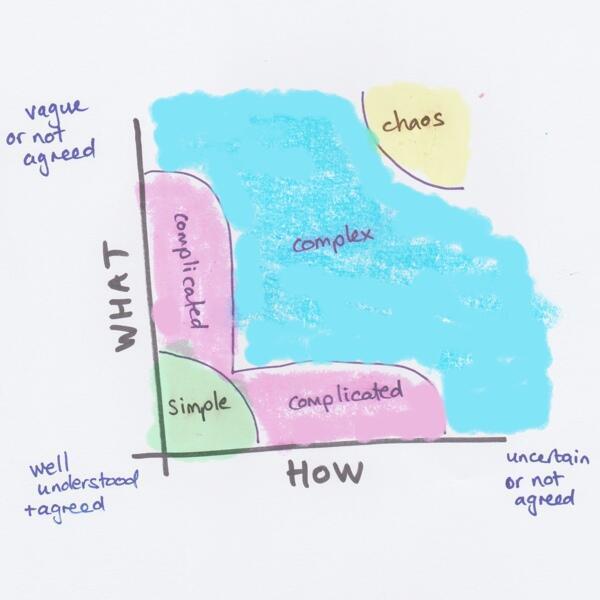
The diagram above is called the Stacey Matrix (see a Sam Laing description back in 2013 or on my personal blog). It shows that traditional planned/defined approaches aren’t a good fit when facing the complexity that results from medium/high uncertainty. Specifically, the Stacey matrix maps two aspects – WHAT and HOW.
WHAT relates to questions around what our customer journey experience should look like. Well-understood and agreed on means that we have very high certainty around what experience would streamline our customer’s buying journey. Vague or not understood means we might think we know, but we’re not sure, or even that we don’t know what experience we’re looking for.
HOW relates to questions around implementation. Here, a big part of the challenge is the growth of the marketing technology stack. As Molly Walsh asks, How the heck did we get here? Most marketing organizations are struggling to implement their marketing plays. The more technologies in your stack, the more moving parts, the more uncertainty around fitting the pieces together.
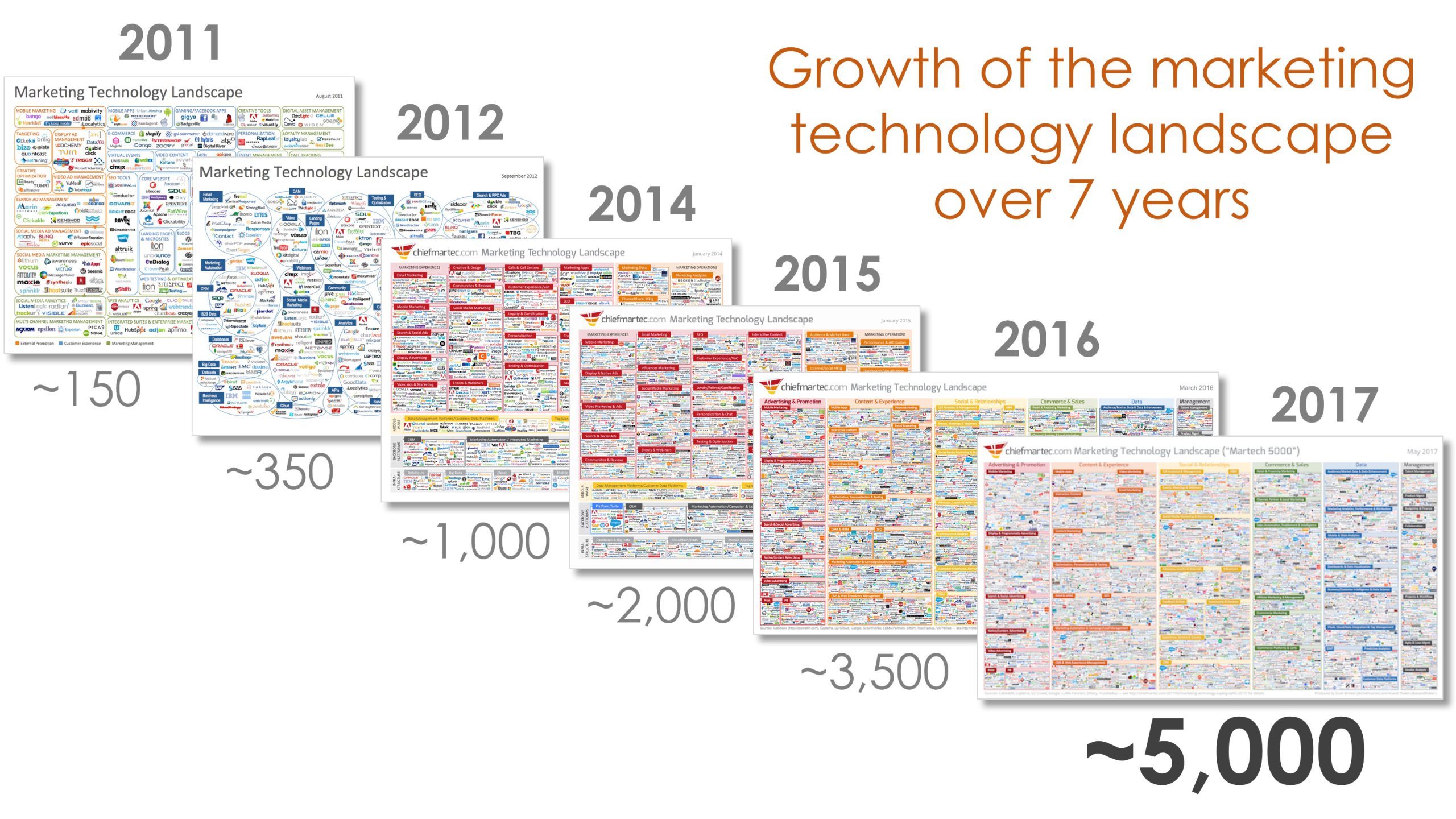
As you can see, once you have both WHAT and HOW uncertainty, you’re well into the complex space. In the complex space, planning upfront wields limited results as you can’t predict what would work in advance. You can plan your objectives/goals/investments, but even that would change as the landscape changes.
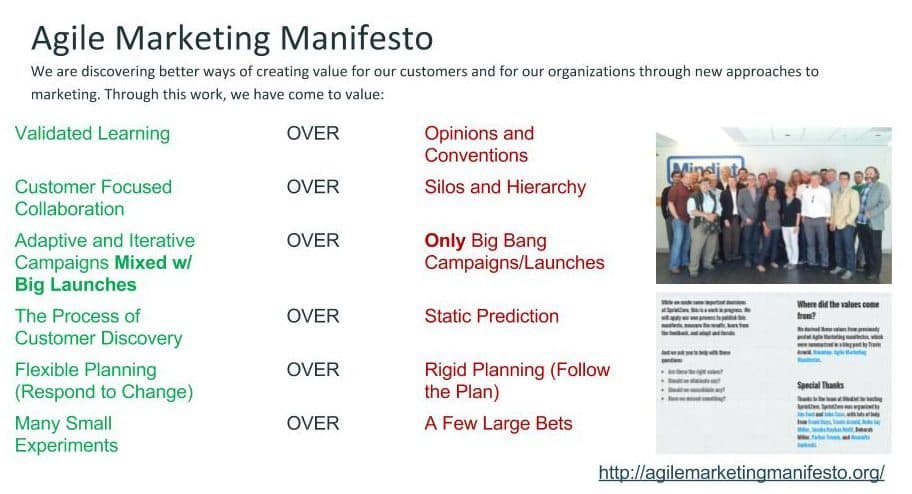
Agile Marketing leverages Empiricism – Agile Marketers anticipate complexity/uncertainty and deal with it in a disciplined pragmatic, sustainable manner.
They work iteratively. Starting with a plan based on hypotheses. Quickly creating a small increment that aims to validate WHAT-related and HOW-related assumptions using a thin slice of the marketing campaign/play they’re working on.
Creating transparency by reviewing this increment with stakeholders and ideally testing it out in the real world.
Inspecting where they actually are based on this increment and adjust course accordingly.
Agile Marketers cherish Transparency, Inspection, and Adaptation – the pillars of Empiricism.
They and their leaders work to create a culture of trust, openness, courage, and respect required to enable empiricism.
Agile Marketers work in Teams that cut across multiple marketing and other business functions enable customer-focused collaboration.
They replace the handoffs you might find in a relay race with the collaborative play you see in rugby (or basketball or soccer). These agile marketing teams are designed to be cohesive and autonomous.
They deliver increments of valuable marketing outcomes with minimal outside dependencies.
We call them A-Teams – A for autonomous, authorized, able, and aligned.
While several practitioners used Agile in Marketing more than 10 years ago, Agile Marketing was officially born in 2012 with the creation of the Agile Marketing Manifesto during the SprintZero event.
The Agile Marketing Manifesto emphasizes/values some new marketing approaches that are replacing some well-entrenched marketing conventions. This is actually aligned with what Marketing leaders such as Sergio Zyman have been advocating for. If you read Sergio’s “The End of Marketing As We Know It” from back in 2000, you will find hints of Agile Marketing!

The Agile Marketing Manifesto introduces concepts such as validated learning (which is brought over from the Lean Startup approach) – replacing decisions made just based on opinions and conventions with a process of looking at each marketing play, identifying risks/assumptions, then for the risky plays going into a Build-Measure-Learn experimentation iterative loop where marketers try to validate as quickly as possible whether their thinking and assumptions are correct.
Upon validation, the play can be completed and scaled. In case of invalidation, the play can be tweaked/changed in a “Pivot” to continue to look for a winning play.
This is called “Fire bullets (and only) then fire cannonballs” in Jim Collins’s Great By Choice.
When there’s less risk, it still makes sense to deliver incrementally – you want to minimize the cost of delays between the time you decide to execute a marketing play/campaign and the time you’re able to go to the market. If you can deliver some minimal play/campaign that can already start to impact your customer journey/brand, you want to do that.
This seemingly goes against marketing conventions like “nailing the perfect campaign and only then launching it with a big bang” and “protecting our brand by only releasing high-quality marketing content.”
Why seemingly? because, in spirit, the agile marketing approach is actually more aligned with the rationale behind these conventions.
Using adaptive iterative campaigns, leverage small experiments to make sure “we nailed it” and only then “launching with a big bang” still looks like a “big bang” to most of the market.
Also, you get the advantage of having a higher chance of success since it was validated in the real world, thereby protecting the brand by reducing the chance of spectacular failure upon the big bang launch. (e.g., Pepsi’s controversial ad or New Coke – both smartly pulled from the market pretty quickly after considerable sunk costs).
We HAVE to be able to adapt.
It might feel uncomfortable, but we must find a way to do it. The key to doing it well is to slice experiences in a way that you’re still delivering a great experience but only for a small slice of the market or some part of their needs but in a way that is representative of the wider audience/experience so that you can learn and improve your plans/designs based on it. (e.g., just in one city, just for one type of user of your product, just as an experiment in one airport, whatever).
Being able to craft meaningful, high-quality experiences that are still smaller than the “full thing” is one of the agile marketer’s non-trivial yet important skills.
There’s a lot of applicable learning in this domain from what startups and enterprises see trying to adopt “Lean Startup” and “Minimum Viable Product” thinking. Still, it comes down to innovative, creative thinking by marketers to develop the right tactics that can help them test their strategies without risking the brand or diminishing the overall impact of the overall marketing campaign.
Agile Marketing brings together marketers and other players to collaborate on improving customer experiences. If you were ever a sole marketer for a company or part of a small startup/company marketing team, you know what this looks like. You can move much faster when you need to deliver the overall marketing impact on your team (or in your head). Most marketing organizations lose this advantage when they grow beyond the single team and specialize.
Agile Marketing tries to bring back this effectiveness, speed, fun, and focus of the small startup regardless of your organization’s size. We create autonomous agile marketing teams empowered to make local decisions aligned with achieving their goals while doing what’s right for the overall brand. This only works if we:
This autonomy and new structure don’t mean there’s no need for marketing managers/directors, of course. It does mean changes in their focus, e.g., on hiring and nurturing great marketers and providing a clear and meaningful mission/purpose.
Those customer-focused teams own aspects such as:
While we call it Agile Marketing, in many cases, these teams include and involve participants from other adjacent functions such as Inside Sales, Product Management, Customer Success.
Once the marketing organization work structure is oriented towards a customer-focus – Agile Marketers start managing their work in a customer-focused way. They use work items that reflect marketing value, such as “User Stories” or “Job Stories” rather than “to-do lists” or “tasks.” Thinking of work in this way and including the goal/impact expected of each work item as part of the “Story” helps marketers maintain a laser-focus on the customer impact they’re aiming for – day in and day out. This also makes it easier to communicate with business stakeholders about what marketing is focusing on and get their early feedback and guidance – which helps avoid the common situation where marketers talk in language that business/sales don’t care about and after delivering something there are still major gaps between what the business/sales expected and the marketing that was delivered.
Agile Marketers also use more disciplined and more customer-focused prioritization mechanisms that take into account considerations such as Cost of Delay, Time Criticality, Opportunities, and Risks addressed to consider what to focus on next and whether to interrupt ongoing work for an emerging opportunity.
While some marketers understand agile marketing to mean “no planning,” this is not the intent. The Agile Marketing Manifesto talks about “Responding To Change” over “Following The Plan.” Another way to look at it is “Flexible” or “Continuous” Planning vs. “Rigid Static Planning.”
Agile Marketers plan at multiple levels oriented both around timeboxes (day, week, quarter) or content (campaign, launch, play). Planning might happen on a cadence or just-in-time. But as a general rule, Agile Marketers plan just enough just in time.
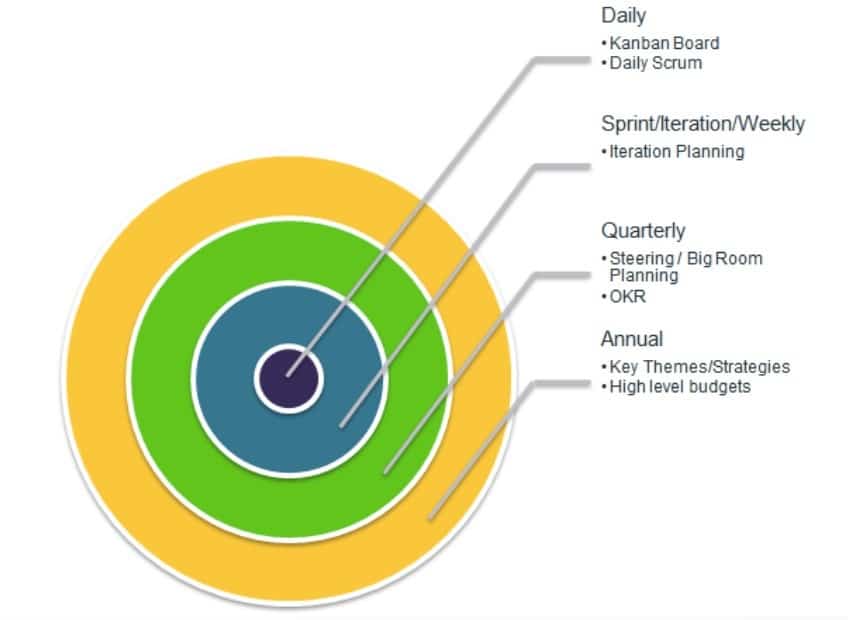
Agile Marketers use specific techniques such as Kanban, Scrum, and sometimes a higher-level framework such as SAFe (Scaled Agile Framework) to plan their work.
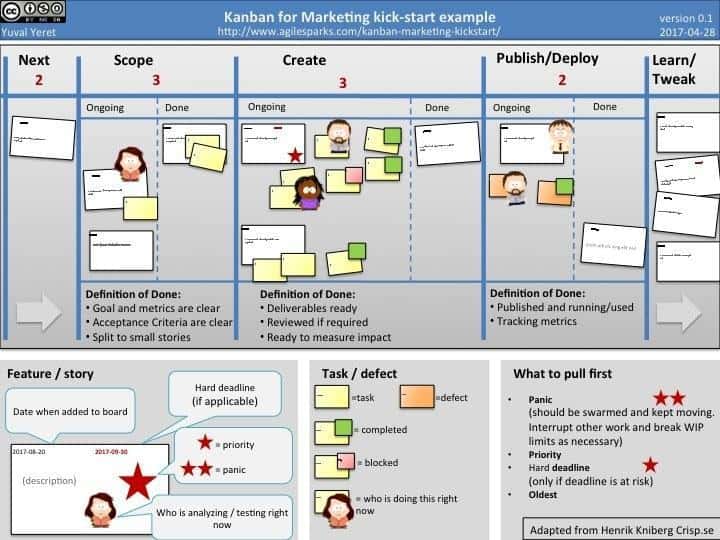
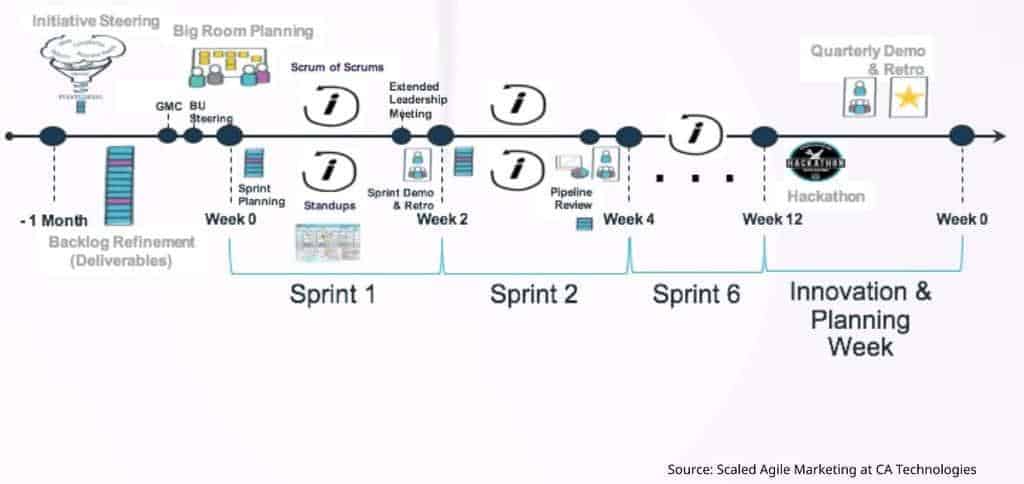
Request for additional information and prices
Subscribe to our newsletter, and stay updated on the latest Agile news and events